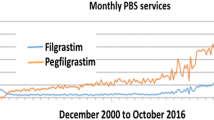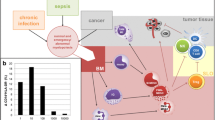Abstract
Recently it has been observed in preclinical models that that radiation enhances the recruitment of circulating tumor cells to primary tumors, and results in tumor regrowth after treatment. This process may have implications for clinical radiotherapy, which improves control of a number of tumor types but which, despite continued dose escalation and aggressive fractionation, is unable to fully prevent local recurrences. By irradiating a single tumor within an animal bearing multiple lesions, we observed an increase in tumor cell migration to irradiated and unirradiated sites, suggesting a systemic component to this process. Previous work has identified the cytokine GM-CSF, produced by tumor cells following irradiation, as a key effector of this process. We evaluated the ability of systemic injections of a PEGylated form of GM-CSF to stimulate tumor cell migration. While increases in invasion and migration were observed for tumor cells in a transwell assay, we found that daily injections of PEG-GM-CSF to tumor-bearing animals did not increase migration of cells to tumors, despite the anticipated changes in circulating levels of granulocytes and monocytes produced by this treatment. Combination of PEG-GM-CSF treatment with radiation also did not increase tumor cell migration. These findings suggest that clinical use of GM-CSF to treat neutropenia in cancer patients will not have negative effects on the aggressiveness of residual cancer cells. However, further work is needed to characterize the mechanism by which GM-CSF facilitates systemic recruitment of trafficking tumor cells to tumors.
Similar content being viewed by others
References
Vilalta M, Rafat M, Graves EE (2016) Effects of radiation on metastasis and tumor cell migration. Cell Mol Life Sci 73:2999–3007
Vilalta M et al (2014) Recruitment of circulating breast cancer cells is stimulated by radiotherapy. Cell Rep 8:402–409
Hachiya M et al (1994) Irradiation increases expression of GM-CSF in human fibroblasts by transcriptional and post-transcriptional regulation. Exp Cell Res 214:343–350
Uemura Y et al (2006) Effects of GM-CSF and M-CSF on tumor progression of lung cancer: roles of MEK1/ERK and AKT/PKB pathways. Int J Mol Med 18:365–373
Gutschalk CM et al (2013) GM-CSF enhances tumor invasion by elevated MMP-2, -9, and -26 expression. Cancer Med 2:117–129
Mehta HM, Malandra M, Corey SJ (2015) G-CSF and GM-CSF in Neutropenia. J Immunol 195:1341–1349
Ryu JK et al (2007) The impact of concurrent granulocyte macrophage-colony stimulating factor on radiation-induced mucositis in head and neck cancer patients: a double-blind placebo-controlled prospective phase III study by Radiation Therapy Oncology Group 9901. Int J Radiat Oncol Biol Phys 67:643–650
Golden EB et al (2015) Local radiotherapy and granulocyte-macrophage colony-stimulating factor to generate abscopal responses in patients with metastatic solid tumours: a proof-of-principle trial. Lancet Oncol 16:795–803
Plett PA et al (2014) PEGylated G-CSF (BBT-015), GM-CSF (BBT-007), AND IL-11 (BBT-059) Analogs enhance survival and hematopoietic cell recovery in a mouse model of the hematopoietic syndrome of the acute radiation syndrome. Health Phys 106:7–20
von Essen CF (1991) Radiation enhancement of metastasis: a review. Clin Exp Metastasis 9:77–104
Martin OA et al (2014) Mobilization of viable tumor cells into the circulation during radiation therapy. Int J Radiat Oncol Biol Phys 88:395–403
McGale P et al (2014) Effect of radiotherapy after mastectomy and axillary surgery on 10-year recurrence and 20-year breast cancer mortality: meta-analysis of individual patient data for 8135 women in 22 randomised trials. Lancet 383:2127–2135
Lowery AJ et al (2012) Locoregional recurrence after breast cancer surgery: a systematic review by receptor phenotype. Breast Cancer Res Treat 133:831–841
Campeau MP et al (2009) Local control and survival following concomitant chemoradiotherapy in inoperable stage I non-small-cell lung cancer. Int J Radiat Oncol Biol Phys 74:1371–1375
Garden AS et al (2008) Long-term results of concomitant boost radiation plus concurrent cisplatin for advanced head and neck carcinomas: a phase II trial of the radiation therapy oncology group (RTOG 99 – 14). Int J Radiat Oncol Biol Phys 71:1351–1355
Barani IJ, Larson DA (2015) Radiation therapy of glioblastoma. Cancer Treat Res 163:49–73
Dranoff G (2002) GM-CSF-based cancer vaccines. Immunol Rev 188:147–154
Harrington KJ et al (2016) Efficacy and safety of talimogene laherparepvec versus granulocyte-macrophage colony-stimulating factor in patients with stage IIIB/C and IVM1a melanoma: subanalysis of the Phase III OPTiM trial. Oncol Targets Ther 9:7081–7093
Waselenko JK et al (2004) Medical management of the acute radiation syndrome: recommendations of the Strategic National Stockpile Radiation Working Group. Ann Intern Med 140:1037–1051
Gourmelon P et al (2010) European consensus on the medical management of acute radiation syndrome and analysis of the radiation accidents in Belgium and Senegal. Health Phys 98:825–832
Demaria S, Formenti SC (2012) Role of T lymphocytes in tumor response to radiotherapy. Front Oncol 2:95
Brown JM (2014) Vasculogenesis: a crucial player in the resistance of solid tumours to radiotherapy. Br J Radiol 87:20130686
Murthy SM et al (1989) The influence of surgical trauma on experimental metastasis. Cancer 64:2035–2044
Mavragani IV et al (2017) Complex DNA damage: a route to radiation-induced genomic instability and carcinogenesis. Cancers (Basel) 9:91
Vanpouille-Box C et al (2017) DNA exonuclease Trex1 regulates radiotherapy-induced tumour immunogenicity. Nat Commun 8:15618
Acknowledgements
This work was funded by the National Institutes of Health and the National Cancer Institute of the United States (R01 CA197136, P01 CA067166, S10 OD018208).
Funding
This study was funded by the National Institutes of Health and the National Cancer Institute of the United States (R01 CA197136, P01 CA067166).
Author information
Authors and Affiliations
Corresponding author
Ethics declarations
Conflict of interest
M. Vilalta declares that she has no conflict of interest. J. Brune declares that she has no conflict of interest. M. Rafat declares that she has no conflict of interest. L. Soto declares that he has no conflict of interest. E.E. Graves declares that he has no conflict of interest.
Ethical approval
All procedures performed in studies involving animal subjects were performed in accordance with the ethical standards of the institutional and national research committee, following approval of an animal protocol by the institutional animal care and use committee.
Rights and permissions
About this article
Cite this article
Vilalta, M., Brune, J., Rafat, M. et al. The role of granulocyte macrophage colony stimulating factor (GM-CSF) in radiation-induced tumor cell migration. Clin Exp Metastasis 35, 247–254 (2018). https://doi.org/10.1007/s10585-018-9877-y
Received:
Accepted:
Published:
Issue Date:
DOI: https://doi.org/10.1007/s10585-018-9877-y









